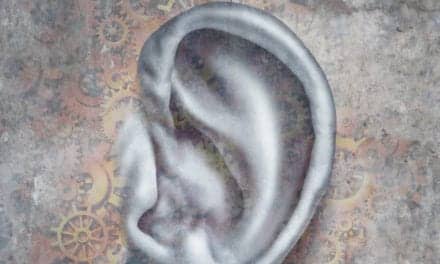As an acoustical engineer, Craig Dolder—currently a graduate student at the University of Texas, Austin—knew that loud noises can damage hearing. Even so, when Canada’s Formula 1 Grand Prix coincided with an Acoustical Society of America (ASA) meeting that he was attending in Montreal, Quebec, earlier this year, Dolder was drawn to the racetrack and the deafening roar of the Formula 1 engines.

|
| Formula 1 driver, Michael Schumacher in 2001. Source: Wikipedia |
And he brought his sound level meter with him.
“I’ve always wanted to go to one of those races,” Dolder says. “So I made the arrangements, and then I thought to myself, ‘This is going to be really loud. What do I need to wear to protect myself?’”
The advice he found online was “all over the spectrum,” he says, with some people recommending foam earplugs and earmuffs, some prescribing noise-canceling headphones, and still others avowing that getting your ears blasted was an integral part of the Formula 1 experience.
The technical papers he read provided assessments of sound levels for NASCAR and other races, but he could find nothing that measured the noise levels or dosage specifically for Formula 1. So he decided to conduct his own test at the Montreal racetrack.
“I thought the information should be out there so people could make a more informed decision about what to wear for hearing protection,” he says.
Dolder stood among the general admission crowd within about 25 feet of the racing cars, and he measured the sound at three different locations. Formula 1 tracks are not a simple oval shape, so the noise levels can be significantly different depending on whether drivers are slowing down for a hairpin turn or revving their engines for a straightaway. After gathering his data, Dolder calculated the noise dosage at the three locations and compared it to dosage standards used in the United States.
Track-side noise may exceed 8,500% of a person’s daily recommended noise exposure, according to new research presented at the 166th meeting of the Acoustical Society of America (ASA)
Of the locations he tested, the loudest by far was at the end of a hairpin turn just before a straightaway. Dolder calculated that without hearing protection, an audience member would get 234% of his daily allowed noise dosage going by Occupational Safety and Health Administration (OSHA) standards. Using the much stricter standards imposed by the National Institute for Occupational Safety and Health (NIOSH), the noise at this location leapt to a staggering 8,585%. These two standards serve to protect workers against cumulative noise exposure (5 days a week, 8 hours a day for a working life), so these dosages alone do not indicate the potential for permanent damage after one race, Dolder says.
The quietest position he tested was at the beginning of an “S” turn, when drivers were slowing down. Here, an audience member would get only 53% of his daily noise dosage by OSHA standards.
Where spectators stand to view the race probably does not matter as long as they are wearing good hearing protection, he says. And a good pair of earmuffs should not get too much in the way of a full experience of the race.
“You will still feel [those loud noises] in your body,” Dolder says. “But it’s not worth the risk of exposing yourself to that noise unprotected.”
Dolder recently presented his results at the 166th meeting of the Acoustical Society of America in San Francisco.
The abstract describing this work can be found here.
Source: Acoustical Society of America via Newswise





